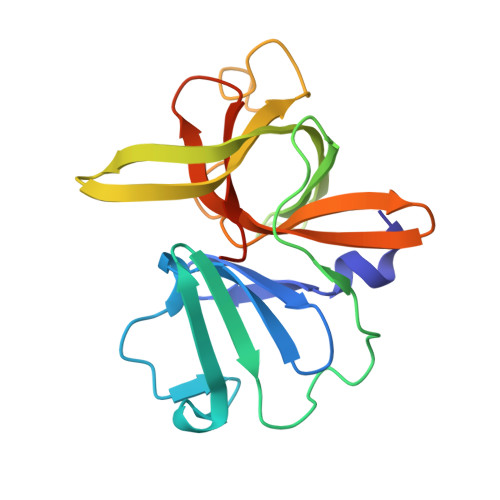Structural and Antiviral Studies of the Human Norovirus GII.4 Protease.
Muzzarelli, K.M., Kuiper, B., Spellmon, N., Brunzelle, J., Hackett, J., Amblard, F., Zhou, S., Liu, P., Kovari, I.A., Yang, Z., Schinazi, R.F., Kovari, L.C.(2019) Biochemistry 58: 900-907
- PubMed: 30605321
- DOI: https://doi.org/10.1021/acs.biochem.8b01063
- Primary Citation of Related Structures:
6B6I - PubMed Abstract:
Norovirus is the leading cause of acute gastroenteritis worldwide with a yearly reported 700 million cases driving a $60 billion global socioeconomic burden. With no United States Food and Drug Administration approved therapeutics and the chance for severe chronic infection and life-threatening complications, researchers have identified the protease as a potential target. However, drug development has focused on the norovirus GI.1 strain despite its accounting for less than 5% of all outbreaks. Our lab aims to change focus for norovirus drug design from GI.1 to the highly infective GII.4, responsible for more than 50% of all outbreaks worldwide. With the first published crystal structure of the norovirus GII.4 protease, we have identified several significant differences in the structure and active site that have hindered development of a potent inhibitor targeting the norovirus GII.4 protease. With these new insights, we have begun designing compounds that demonstrate increased inhibition of the clinically most relevant norovirus GII.4 strain.
- Department of Biochemistry, Microbiology and Immunology , Wayne State University School of Medicine , Detroit , Michigan 48201 , United States.
Organizational Affiliation:
















